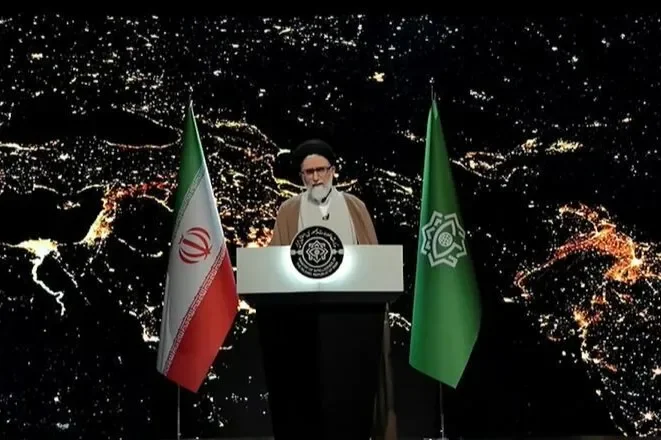Iran’s Mass Executions Signal Spy Purges, Political Repression, and Nuclear Deception
Executive Summary
Iran has executed over 1,000 people in 2025—its highest in decades—while expanding politically motivated death sentences against activists, minorities, and alleged spies. Authorities are increasingly linking detainees to Israel’s Mossad or to “hostile governments,” often after grossly unfair trials, as part of a broader campaign to consolidate internal control following June’s war with Israel and renewed UN sanctions. Simultaneously, Tehran has suspended cooperation with the IAEA and is framing activists, political prisoners, and even humanitarian workers as espionage assets—blurring repression with counterintelligence narratives and heightening international concern.
Key Judgments
Key Judgment 1
Iran is conducting executions on an industrial scale, weaponizing the death penalty to intimidate dissent and purge perceived threats.
Evidence: UN experts report an average of nine hangings per day, with more than 1,000 executions so far in 2025—the highest in at least 15 years. Amnesty International warned the surge represents systematic state repression, including drug-related offenses, political dissent, and “enmity against God.” (UN News; Amnesty International)Key Judgment 2
Executions disproportionately target ethnic and marginalized groups, reflecting both systemic discrimination and political expediency.
Evidence: Baluchis, Kurds, and Afghans face vastly disproportionate death sentences. Afghans executed tripled between 2023–2024, while at least 17% of drug-related executions in 2024 were Baluchi despite their small population share. (JURIST; Amnesty International)Key Judgment 3
Iran is intensifying politically motivated executions by labeling activists, dissidents, and humanitarian workers as Mossad-linked spies.
Evidence: Political prisoners like Hamed Validi and Nima Shahi were sentenced to death after alleged Mossad ties, while recent executions of men accused of spying for Israel followed closed-door trials with torture allegations. (AP; NCRI)Key Judgment 4
The regime is using espionage charges to delegitimize activists and justify mass repression under the guise of national security.
Evidence: Revolutionary Courts sentenced protesters and aid workers to death on charges of “corruption on earth” and “cooperation with hostile governments,” often without due process. Since June, at least 10 people have been executed on espionage-linked charges, with many more at risk. (Amnesty International; NCRI)Key Judgment 5
Iran’s suspension of IAEA cooperation, combined with espionage-related executions, reflects a dual strategy of eroding international monitoring while discrediting domestic dissent as foreign infiltration.
Evidence: Iran halted IAEA cooperation after the UN sanctions snapback, while simultaneously publicizing seizures of alleged Israeli nuclear documents and threatening activists with espionage trials. (IFP News; AP; Semper Incolumem)
Analysis
Iran’s execution surge in 2025 represents both an authoritarian crackdown and a calculated counterintelligence narrative. The numbers are staggering: over 1,000 deaths in less than a year, surpassing even the notorious post–Iran-Iraq War executions of 1988. What distinguishes the current wave is its dual use: on one hand, traditional repression of minorities and drug offenders; on the other, a dramatic expansion of politically motivated executions tied to espionage claims.
This campaign must be understood against the geopolitical backdrop. Following June’s war with Israel and the reimposition of UN sanctions, Iran’s leadership faces simultaneous external pressure and internal dissent. By framing opposition activists as Mossad or Western agents, Tehran delegitimizes protest, eliminates critics, and positions executions as “counter-espionage” rather than repression. The tactic of labeling women’s rights defenders, workers’ organizers, or humanitarian activists as spies exemplifies this trend.
Revolutionary Courts have become the central mechanism for this purge. These courts routinely deny fair trials, admit coerced confessions, and fast-track death sentences. The execution of Babak Shahbazi and Bahman Choobiasl—both accused of espionage for Israel—demonstrates how closed-door trials can deliver capital punishment within months, often without independent evidence. By blending espionage and dissent, Tehran signals that any political opposition is a national security threat.
Ethnic and migrant minorities remain particularly vulnerable. The disproportionate execution of Afghans coincides with mass expulsions and rising xenophobic rhetoric, while Kurdish and Baluchi prisoners are routinely sentenced to death for drug crimes or political activity. This selective targeting serves both to intimidate marginalized groups and to consolidate control in restive provinces.
Internationally, Iran’s simultaneous suspension of IAEA cooperation further complicates the picture. Tehran has halted inspections, floated withdrawal from the NPT, and publicized claims of capturing Israeli nuclear intelligence. These moves project defiance abroad while justifying repression at home—portraying executions as necessary to counter foreign infiltration. The strategy effectively conflates domestic dissent, ethnic identity, and international espionage into one narrative of existential struggle.
This pattern carries multiple implications. First, the scale of executions risks destabilizing Iran’s internal landscape by fueling cycles of protest, martyrdom, and radicalization. Second, the erosion of IAEA oversight amid nuclear escalations raises the risk of miscalculation at a time when Israel–Iran tensions remain high. Finally, Tehran’s weaponization of espionage charges to suppress dissent undermines international human rights law, erodes confidence in nonproliferation commitments, and complicates diplomatic engagement.
The trajectory suggests that executions will continue at an industrial scale unless external actors impose meaningful pressure. Yet sanctions alone are unlikely to change behavior; Iran has embedded executions as both a deterrent and a propaganda tool. Meaningful accountability—whether through universal jurisdiction cases against Iranian officials, coordinated UN mechanisms, or exposure of closed-door trials—will be necessary to challenge this lethal campaign.


